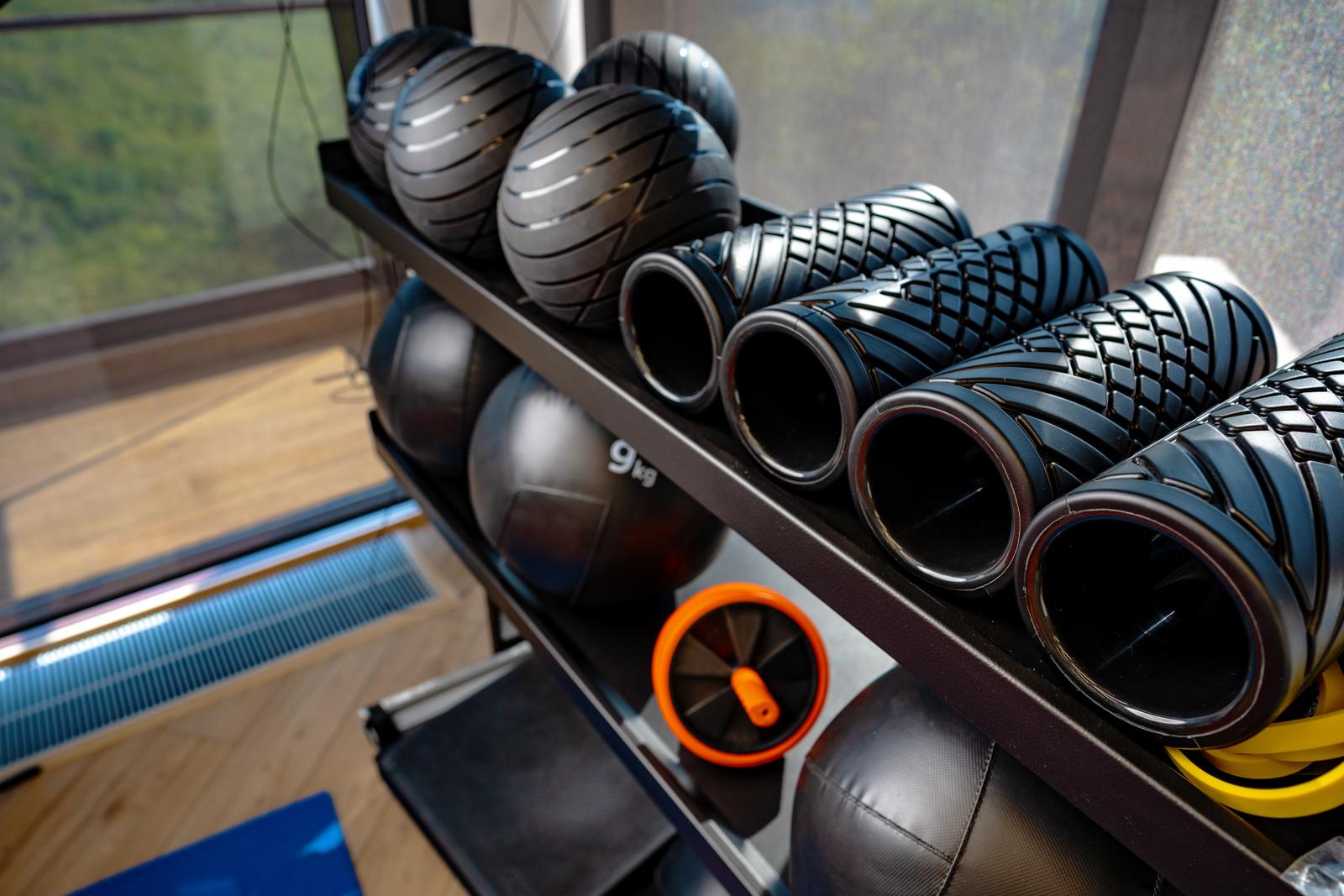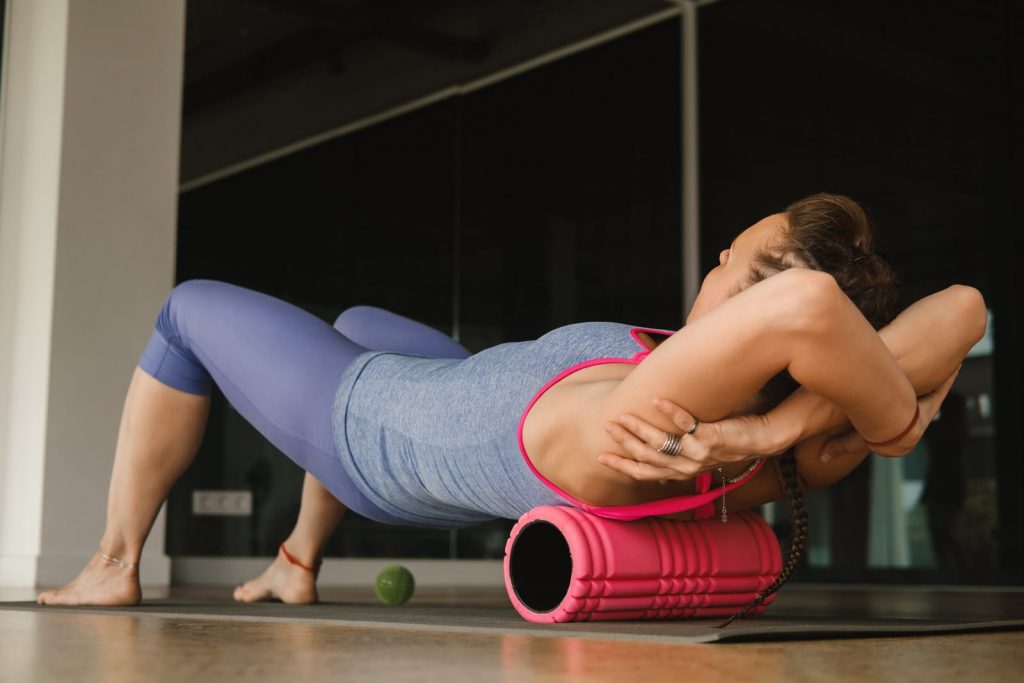
Using a Massage Roller for Post-Workout Relief
Did you know that using a massage roller can reduce muscle soreness by up to 30% after an intense workout? Discover the ultimate post-workout recovery tool that can ease tension, increase blood flow, and enhance flexibility. Whether you’re a fitness enthusiast or a casual gym-goer, incorporating a massage roller into your routine can work wonders for your muscles.
Say goodbye to post-exercise stiffness and hello to quicker recovery times. Get ready to roll away those knots and tight spots with simple yet effective techniques.
Benefits of Using a Massage Roller After a Workout
Reduces Muscle Soreness and Stiffness
Using a massage roller after working out can significantly reduce muscle soreness and stiffness. By applying pressure to different muscle groups, the roller helps release tension built up during exercise, promoting relaxation.
Regular use of a massage roller can target specific areas where muscles tend to tighten post-workout. This targeted approach aids in loosening knots and tight spots, providing relief from discomfort and promoting flexibility.
Improves Blood Circulation for Muscle Recovery
One of the key benefits of using a massage roller is its ability to improve blood circulation, which is crucial for effective muscle recovery. By rolling the device over muscles, you stimulate blood flow, delivering essential nutrients and oxygen to the muscles for faster healing.
Enhanced blood circulation also helps remove waste products like lactic acid that accumulate in the muscles during intense exercise. This process supports quicker recovery times by flushing out toxins that contribute to muscle fatigue.
When to Utilize a Massage Roller for Optimal Relief
Right After Your Workout
Using a massage roller immediately after your workout helps release muscle tension and improve blood flow. Roll the massage roller along your muscles to alleviate any tightness or discomfort you may be experiencing.
Rolling out your muscles post-workout can prevent stiffness and soreness, aiding in faster recovery. It’s crucial to use the massage roller on areas like the back, shoulders, or knees that are prone to pain and tension after exercising.
When Experiencing Discomfort
If you’re feeling muscle tightness or discomfort during your workout session or afterwards, grab your massage roller. Target specific areas where you feel pain by rolling the device gently but firmly over those spots.
A massage roller can effectively reduce tension in troubled areas by breaking down knots and increasing flexibility. Incorporating this tool into your routine when experiencing muscle soreness can help alleviate pain quickly.
Read Also: Top Mistakes to Avoid When Using Foam Roller Gym Equipment
Selecting the Right Massage Roller
Density and Firmness
When choosing a massage roller for post-workout relief, consider the density and firmness of the roller. A firmer roller can provide deeper tissue penetration, targeting specific muscle groups effectively. On the other hand, a softer roller is gentler on sensitive areas like the neck or calves.
It’s essential to select a roller that aligns with your comfort level and recovery needs. For instance, if you prefer intense pressure to relieve tight muscles after an intense workout, opt for a denser foam roller perpendicular roll. Conversely, if you’re new to using massage rollers or have lower pain tolerance levels, start with a softer option to avoid discomfort.
Size and Texture
The size and texture of the massage roller are crucial factors in ensuring its effectiveness in relieving muscle tension. Choose a roller that suits your body size; for example, shorter rollers are ideal for targeting specific areas like arms or calves while longer ones cover larger muscle groups like back or thighs efficiently.
Consider the texture of the roller surface—some have smooth exteriors while others feature ridges or knobs for added intensity during massages. Depending on whether you require gentle rolling or more vigorous kneading action on your muscles post-workout, pick a suitable texture that complements your recovery routine.
Techniques for Using a Massage Roller on Legs
Applying Gentle Pressure and Rolling
To effectively use a massage roller for post-workout relief, start by applying gentle pressure on your legs. Roll along the length of your leg muscles using smooth movements. This helps in relaxing the muscles and improving blood circulation.
Rolling can be done from your thighs down to your ankles. By doing so, you target various muscle groups in your legs, aiding in recovery after exercise. Remember to keep the roller moving continuously without pausing abruptly.
Targeting Specific Areas of Tension
When you encounter areas of tension or knots in your leg muscles, pause over those spots with the roller. Apply slightly more pressure on these specific points to help release any tightness or discomfort. This technique allows you to address problem areas effectively.
Effective Foam Roller Exercises for Tired Muscles

Calves Rolling
Roll out your calves by placing one leg on top of the roller. Move back and forth to target sore areas.
Foam rollers are versatile tools that can alleviate muscle tightness, improve blood flow, and enhance post-workout recovery. Rolling them out with a foam roller can help release tension and reduce soreness after an intense workout session. By positioning one leg atop the roller and gently moving back and forth, you can effectively massage the calf muscles.
Hamstrings Relief
Sit on the foam roller to work on your hamstrings. Roll from glutes down to just above knees slowly.
Using a foam roller is an excellent way to relieve tightness in various muscle groups, including the hamstrings. After a strenuous workout that leaves your hamstrings feeling tight or fatigued, sitting on a foam roller and rolling from your glutes down towards just above your knees can help alleviate tension in this area significantly. This simple yet effective exercise aids in improving flexibility while reducing discomfort post-exercise.
Targeted Muscle Groups for Post-Workout Relief
Back Muscles
Roll out your back muscles to alleviate tension from exercises like deadlifts or rows. By targeting this area, you can help relax the major muscle groups in your back, reducing muscle pain and promoting recovery.
When using a massage roller on your back muscles, focus on rolling slowly and pausing on any tender spots to release tension effectively. This technique helps target new muscles that might be sore after a workout session.
IT Band
Pay attention to your IT band to prevent knee pain and improve hip mobility. Rolling out this soft tissue along the outer thigh can reduce tightness caused by intense workouts, ensuring better flexibility and comfort during movements.
By using a massage roller on your IT band regularly post-workout, you can also address trigger points that may develop due to overuse or strain. This practice aids in maintaining healthy tissues around the knees and hips.
Read Also: The Benefits of Foam Roller Gym Equipment for Muscle Recovery
Shoulders and Chest
Targeting your shoulders and chest is crucial for relieving tightness from upper-body workouts. Using a massage roller in these areas helps loosen up muscle tissue affected by exercises involving the arms and body weight.
Rolling out the shoulders gently with a massage roller can alleviate tension accumulated during activities like shoulder presses or arm workouts. Similarly, focusing on the chest area near the armpits promotes the relaxation of muscles strained from various upper body movements.
Maximizing the Effectiveness of Your Massage Roller Routine
Deep Breathing Enhancement
When using a massage roller for post-workout relief, try incorporating deep breathing exercises. This can help enhance relaxation and improve the overall effectiveness of your routine. By focusing on your breath while rolling out tense muscles, you can promote better circulation and reduce stress.
-
Deep breathing enhances relaxation
-
Improves effectiveness of massage roller routine
Foam Rolling with Stretching
To maximize the benefits of your workout routine, consider combining foam rolling with stretching exercises. Foam rolling helps release tension in muscles, preparing them for stretching movements that can further enhance flexibility and range of motion. This comprehensive approach to post-workout recovery can aid in achieving your fitness goals efficiently.
-
Combining foam rolling with stretching is beneficial
-
Enhances flexibility and range of motion
Maintenance for Longevity
Regularly cleaning and maintaining your massage roller is essential to ensure its longevity. Proper care not only extends the lifespan of the roller but also maintains its performance over time. By keeping it clean and free from debris, you can continue to reap the benefits of using it for your post-workout relief routine.
Summary
You’ve learned about the benefits of using a massage roller after a workout, the best times to roll out those knots, how to pick the perfect roller for you, techniques to soothe your legs, effective exercises for tired muscles, and which muscle groups to target. By maximizing your roller routine, you can speed up recovery and keep pushing your limits.
Now it’s your turn! Grab that massage roller, roll out those kinks, and give your muscles the love they deserve. Your body will thank you later. Keep rolling towards that post-workout bliss!
